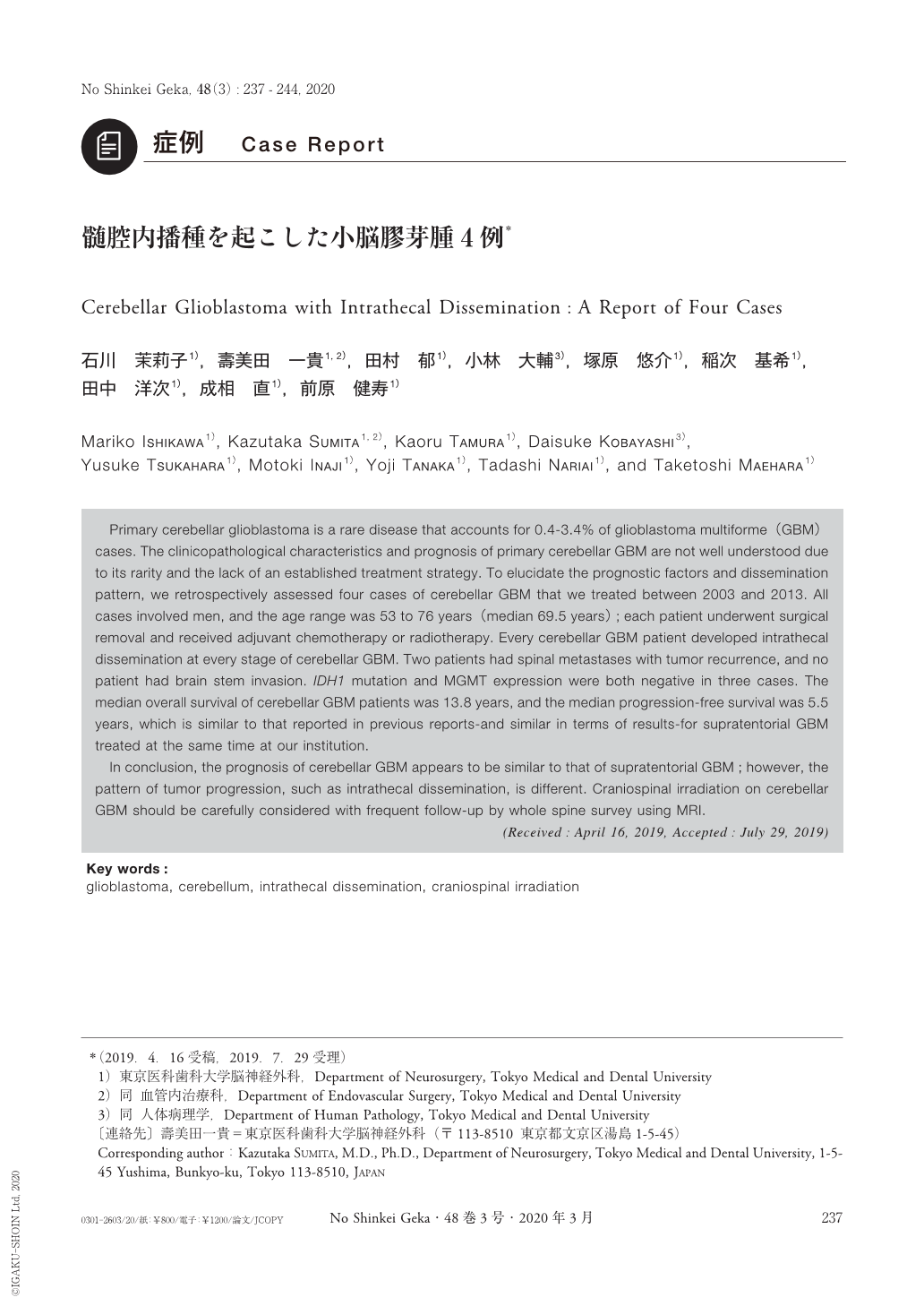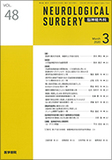Japanese
English
- 有料閲覧
- Abstract 文献概要
- 1ページ目 Look Inside
- 参考文献 Reference
I.はじめに
膠芽腫(glioblastoma multiforme:GBM)の多くは,テント上に発生することが知られているが,小脳の発生例は稀である.その症例数の希少さから,予後因子や生存期間が報告ごとに大きく異なるのが現状である.近年,病理学的特徴や分子細胞学的手法を用いた検討が進んできているが,治療成績や予後については未だ不明な点が多い.今回われわれは,小脳に発生したGBM 4例全例で髄膜播種を認め,うち2例では脊髄への転移を認めた症例を経験したため,治療方法や予後因子,再発後の進展様式などの特徴について,文献的考察を加えて報告する.
Primary cerebellar glioblastoma is a rare disease that accounts for 0.4-3.4% of glioblastoma multiforme(GBM)cases. The clinicopathological characteristics and prognosis of primary cerebellar GBM are not well understood due to its rarity and the lack of an established treatment strategy. To elucidate the prognostic factors and dissemination pattern, we retrospectively assessed four cases of cerebellar GBM that we treated between 2003 and 2013. All cases involved men, and the age range was 53 to 76 years(median 69.5 years);each patient underwent surgical removal and received adjuvant chemotherapy or radiotherapy. Every cerebellar GBM patient developed intrathecal dissemination at every stage of cerebellar GBM. Two patients had spinal metastases with tumor recurrence, and no patient had brain stem invasion. IDH1 mutation and MGMT expression were both negative in three cases. The median overall survival of cerebellar GBM patients was 13.8 years, and the median progression-free survival was 5.5 years, which is similar to that reported in previous reports-and similar in terms of results-for supratentorial GBM treated at the same time at our institution.
In conclusion, the prognosis of cerebellar GBM appears to be similar to that of supratentorial GBM;however, the pattern of tumor progression, such as intrathecal dissemination, is different. Craniospinal irradiation on cerebellar GBM should be carefully considered with frequent follow-up by whole spine survey using MRI.

Copyright © 2020, Igaku-Shoin Ltd. All rights reserved.


